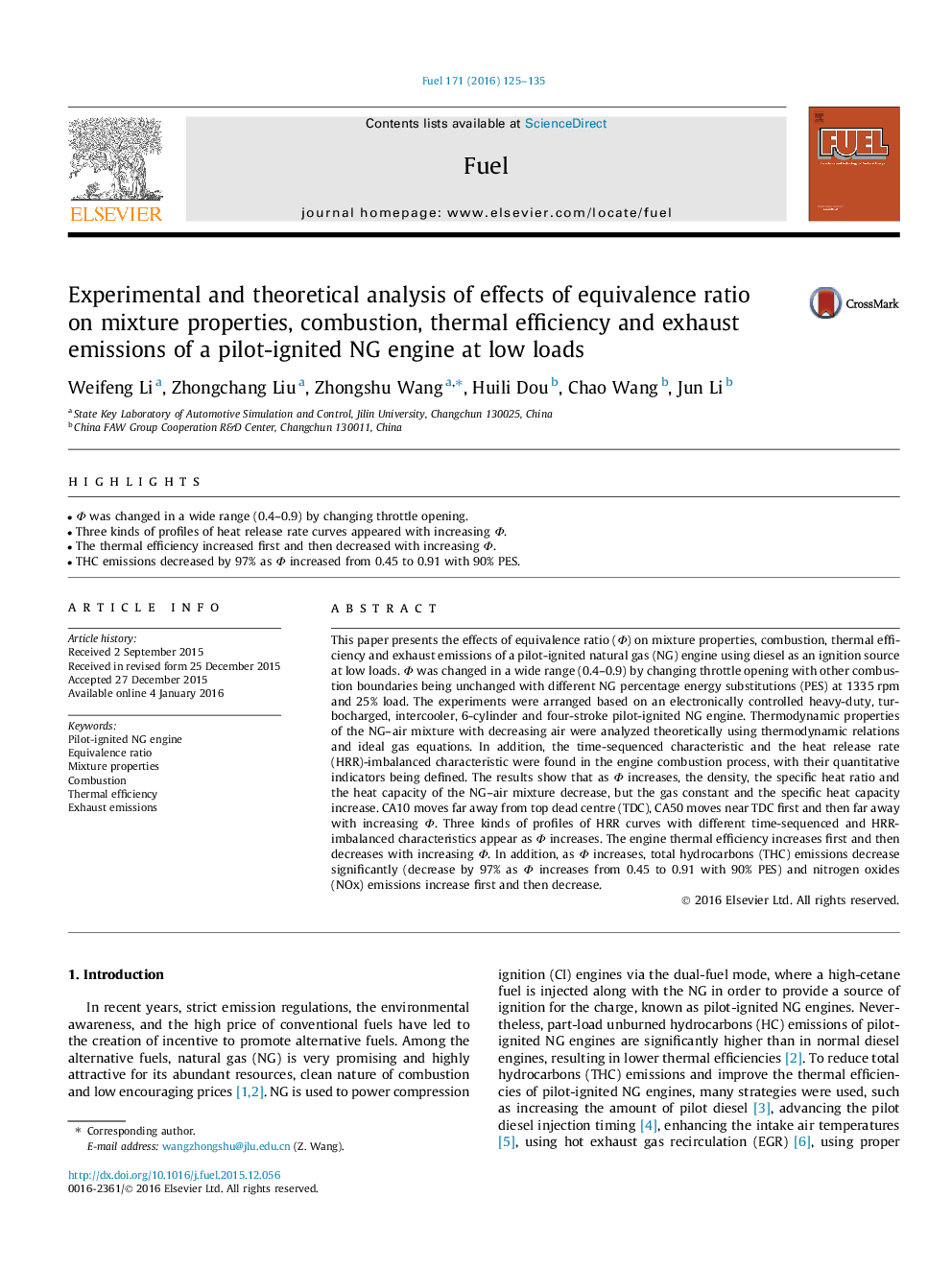| کد مقاله | کد نشریه | سال انتشار | مقاله انگلیسی | نسخه تمام متن |
|---|---|---|---|---|
| 205264 | 461102 | 2016 | 11 صفحه PDF | دانلود رایگان |

• Φ was changed in a wide range (0.4–0.9) by changing throttle opening.
• Three kinds of profiles of heat release rate curves appeared with increasing Φ.
• The thermal efficiency increased first and then decreased with increasing Φ.
• THC emissions decreased by 97% as Φ increased from 0.45 to 0.91 with 90% PES.
This paper presents the effects of equivalence ratio (Φ) on mixture properties, combustion, thermal efficiency and exhaust emissions of a pilot-ignited natural gas (NG) engine using diesel as an ignition source at low loads. Φ was changed in a wide range (0.4–0.9) by changing throttle opening with other combustion boundaries being unchanged with different NG percentage energy substitutions (PES) at 1335 rpm and 25% load. The experiments were arranged based on an electronically controlled heavy-duty, turbocharged, intercooler, 6-cylinder and four-stroke pilot-ignited NG engine. Thermodynamic properties of the NG–air mixture with decreasing air were analyzed theoretically using thermodynamic relations and ideal gas equations. In addition, the time-sequenced characteristic and the heat release rate (HRR)-imbalanced characteristic were found in the engine combustion process, with their quantitative indicators being defined. The results show that as Φ increases, the density, the specific heat ratio and the heat capacity of the NG–air mixture decrease, but the gas constant and the specific heat capacity increase. CA10 moves far away from top dead centre (TDC), CA50 moves near TDC first and then far away with increasing Φ. Three kinds of profiles of HRR curves with different time-sequenced and HRR-imbalanced characteristics appear as Φ increases. The engine thermal efficiency increases first and then decreases with increasing Φ. In addition, as Φ increases, total hydrocarbons (THC) emissions decrease significantly (decrease by 97% as Φ increases from 0.45 to 0.91 with 90% PES) and nitrogen oxides (NOx) emissions increase first and then decrease.
Journal: Fuel - Volume 171, 1 May 2016, Pages 125–135